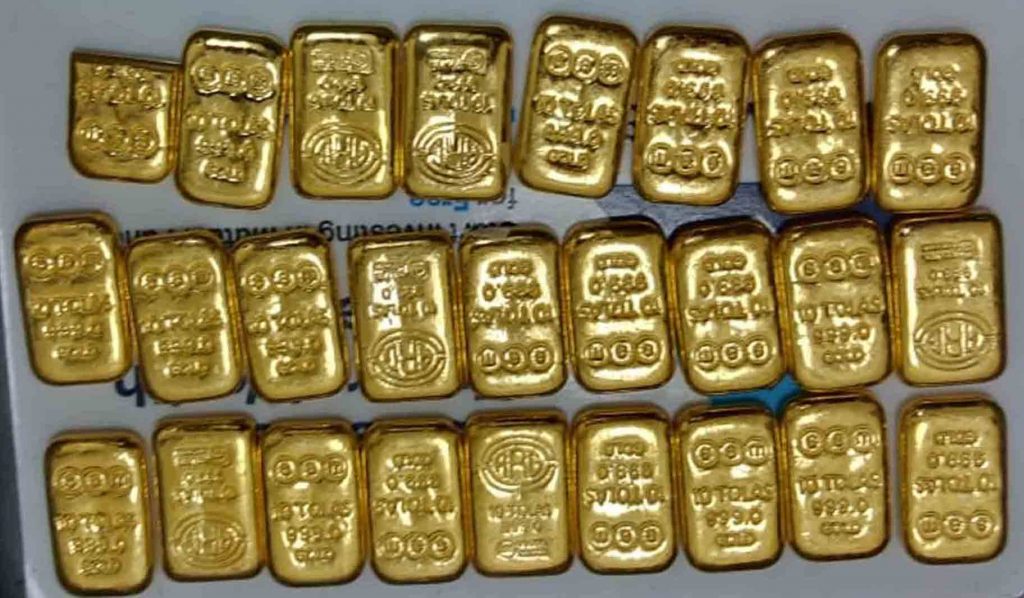New Delhi (IPA Service): With the end of central bank tightening cycle in sight, gold prices are edging higher and the mid-year outlook for the yellow metal has turned more. Domestic prices in India have already been showing an upward trend. The latest gains are attributed to dollar weakness, making purchase of gold cheaper for holders of other currencies.
Both the European Central Bank (ECB) and the Bank of England (BoE) have increased interest rates in June, although the US Fed kept its target rate unchanged as it lets the effects of the tightening cycle make their way through the real economy. US bond market participants expect an additional hike by the Fed this year, most likely this month, followed by a sustained ‘hold’ period. And while bond markets expect the ECB and the BoE to further increase target rates, markets anticipate the end of the cycle is near – or at least by the end of the year.
As monetary policy likely transitions from tightening to on-hold, market consensus is for a mild contraction in the US this year, and slow growth in developed markets, both of which are positive for gold. The World Gold Council analysis that gold will remain supported in 2023, especially given its robust performance in the first half.
In the first half of the year, gold increased by 5.4 percent in US dollar terms and the metal outperformed all other major assets apart from developed market stocks. Gold not only contributed positive returns to investor portfolios, it also helped dampen volatility throughout the first half of the year, especially during the American mini-banking crisis in March.
Behind gold’s performance was a combination of factors, including a relatively stable US dollar and interest rates, risk hedging as well as continued central bank demand. India added 2 tonnes of gold to its reserves in May. Seven other central banks, led by Poland, increased their gold holdings I the month. The National Bank of Poland added 19 tonnes during the month, lifting its gold reserves to 263 tonnes. The People’s Bank of China reported buying 16 tonnes, its seventh consecutive month of purchases. The Chinese gold reserves now stand at 2,092 tonnes. The central bank of Singapore bought 4 tonnes, followed by Russia with 3 tonnes, and Czech and Kyrgyz Republics with 2 tonnes each, same as India’s.
But overall, central banks remained net sellers during May, reporting net sales of 27 tonnes, which was incidentally much less than the 69 tonnes sold in April. The largest seller was Turkey, which offloaded 63 tonnes. Since March, the Turkey central bank has sold nearly 160 tonnes, equivalent to its cumulative purchases over the preceding 12 months. These sales are believed to be a response to local market dynamics, marked by very strong gold demand and a temporary partial ban on gold bullion imports rather than a change to their long-term gold policy.
As far as the domestic market in India is concerned, gold delivered stellar return among all assets in first quarter of 2023. On MCX, gold prices shot up from around Rs 54,975 per 10 gm to Rs 59,371 per 10 gm levels during January to March, logging near 8 per cent rise in the March quarter. This is the second straight quarter that the metal ended higher.
The domestic gold price in India had increased by 3.8 percent in December, helping the year close with an impressive gain of 14 percent, mainly due to the weakening of the rupee against dollar. According to the council, sluggish retail demand drove the local price into discount, with the average discount staying at around $8 per ounce throughout 2022.
The immediate trigger for the new gold price run was the collapse of two US banks along with the crisis in Credit Suisse, which has forced the Swiss banking giant to seek help from the Swiss National Bank for survival, landmark events that have boosted gold’s safe haven value.
The World Gold Council says that though not without risks, a good case for gold remains in place for 2023 driven by: elevated geopolitical risk; a developed market economic slowdown; a peak in interest rates, and risks to equity valuations. In addition, continued central bank buying can’t be ruled out.(IPA Service)
By K Raveendran
